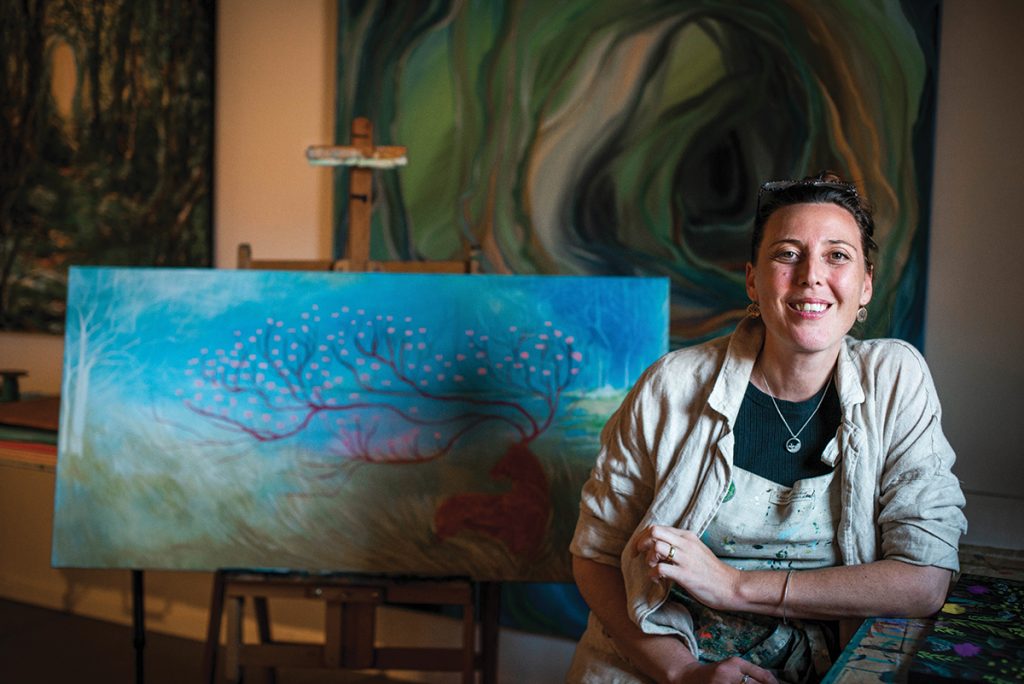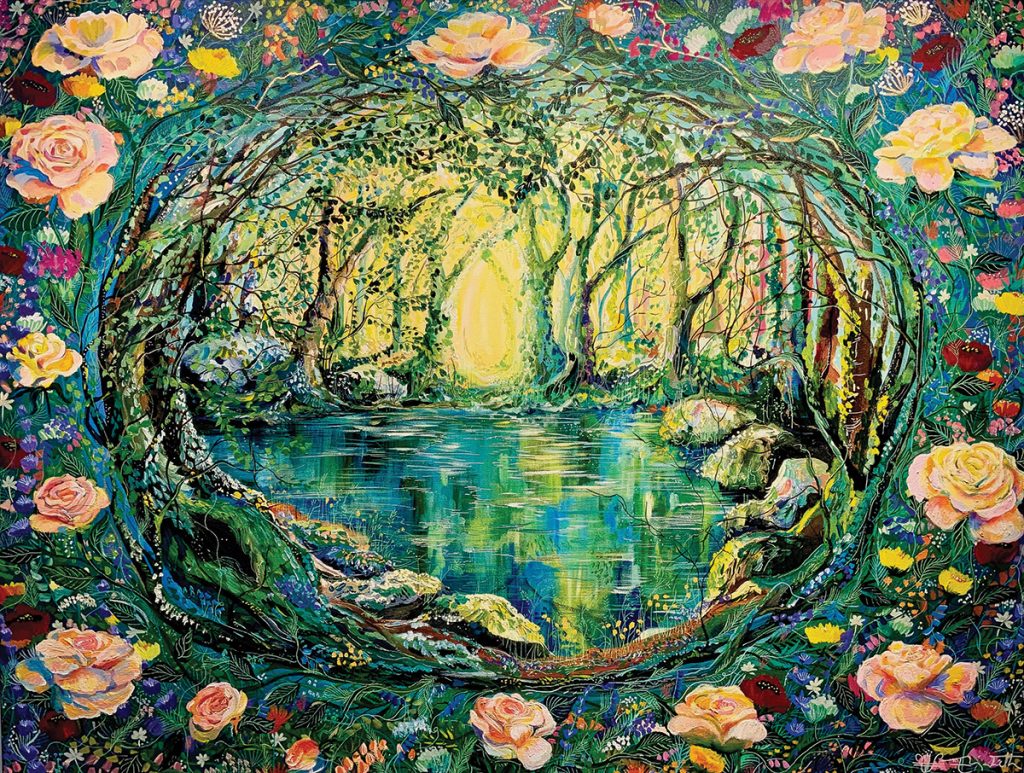
Portrait by Karin Strickland
Elizabeth Porritt Carrington’s life in America started with a whisper at a silent retreat. It was 2009, and a year had passed since her husband had died. Grieving and searching for solace, Carrington traveled from her home in Ireland to Southern Dharma Retreat Center in Hot Springs, North Carolina. But 24 hours into her silent practice, she wanted to “head for the hills.”
“I was having a pretty rough time — a bit of a freakout,” Carrington reveals. That’s when another participant, Philip James Roth, recognized her unease. “He broke silence to ask if I needed help,” she says. That whisper turned quickly into a friendship, and slowly evolved into a four-year, transatlantic relationship.

In 2013, Carrington immigrated to Asheville to be with Roth. Almost instantly, however, she felt unmoored. Longing for the landscapes of west Ireland, she began to paint them. “This visual, intuitive language helped me feel like I had arrived,” she says. “I felt peace.”
Today, Carrington’s paintings — she holds a BFA from the Center for Creativity and Design in Galway, and also studied at the Grennan Mill Craft School in Kilkenny — echo the wildness of her homeland. Canvases are fraught with verdant ferns and deep purple tulips. Golden light pierces the forest understory while woodland creatures rest in beds of bramble. Looking at her work is like stepping into a storybook — each scene is romantic and otherworldly, much like the early years of her youth.

Carrington was raised on a farm in Co. Clare, where her father fished and grew much of their produce. Each day, a 90-year-old farmhand would sit on a stool and tell Carrington and her sisters fairytales. “He would say he saw the fairies the night before when he was cycling home,” she remembers. “He would say the fairies were running from one tree to another with their lanterns, having big parties.”
Then, in the 1980s, Ireland’s economy crashed and “we, as a family, crashed too,” says Carrington. The prolonged recession forced her family to leave the farm and live off the land for five-some years. “We lost everything,” she says.

Despite these troubles, she looks back on her childhood fondly. She lived “totally entangled in the natural world” and would roam, riding ponies with her big sister to the ocean or to the nearest town to purchase a copy of Vogue magazine. Carrington also loved to paint in her youth, though she did not allow herself to be a painter until her mid-twenties because her sister identified as one.
She worked in other genres, though, and at seven months pregnant, having just installed a sculpture and video installation, “I looked at [my] giant baby belly and realized I wanted to make art like this baby — art that was natural and extraordinary,” she says. The need to paint hit hard.

Inspired by love, loss, and frequent spiritual travel — she spent two years in the French Pyrenees with archeologists, exploring the legends of the Holy Grail and Mary Magdalene — Carrington, who also teaches “Eco-Contemplative” art classes, now produces oil and acrylic paintings, drawings, and watercolors that are breathtakingly organic.
“Coming here at 35 years old, there was a sense that life had been brought to a very honest place,” she says.
Elizabeth Porritt Carrington, Riverview Station, 191 Lyman St. #249, Asheville. The artist is also represented by Woolworth Walk (25 Haywood St., Asheville, woolworthwalk.com); Mountain Nest Gallery (133 Cherry St., Black Mountain, mtnnest.com); and The O Gallery in Norcross, Ga. (obregonfineart.com). For more information, visit elizabethcarringtonart.com.